Nintendo Wii U Teardown
by Anand Lal Shimpi on November 18, 2012 8:07 PM ESTWhen Nintendo announced the Wii U there was a lot of interest in its hardware specs. The new console could very well end up the fastest kid on the block thanks to the sheer age of the Xbox 360 and PlayStation 3. I wasn't all that interested in the Wii U, but I did want to get a look at the silicon inside so I grabbed a unit and went into teardown mode.
The Wii U is available in two versions: the basic and deluxe kits. The basic kit comes in white, while the deluxe is black. Both are glossy. The deluxe console gives you 32GB of on-board storage (eMMC NAND) vs. 8GB for the standard model. The deluxe kit also includes a stand and cradle for the Wii U tablet GamePad as well as a stand for the console itself. The two kits retail for $299.99 and $349.99, respectively.
The Wii U hardware itself looks a lot like a larger Wii. Getting inside the chassis is also quite similar. The CMOS battery door is the first thing you'll have to remove, followed by 8 more screws (a mixture of philips head and tri-wing). The bulk of these screws are behind console-colored stickers, be sure to peel them all off. With all 8 (9 including the CMOS battery door) screws removed, you can slide the left side of the Wii U away from the front of the console, and off all together. This reveals the final three tri-wing screws that you'll need to remove to get inside the chassis (the gallery of all of this is at the bottom of the article).
With all 12 screws removed, pry the top of the Wii U up and away from the body until it separates from the rest of the frame revealing the console's fairly compact internals:
The Wii U optical drive uses a custom format for game storage, but offers a very Blu-ray-like 25GB capacity per disc. Max sequential read speeds are pretty high compared to the current gen consoles at 22MB/s.
Two screws hold the front cover in place, followed by four screws that hold the optical drive in place. Be careful when removing the optical drive as there's a ribbon cable attached to the motherboard for power/data. The same goes for the front cover, although its ribbon cable is really only on light/switch duty.
With the optical drive removed, next up is removing the shielding on the top and bottom of the motherboard and the shround on top of the heatsink. Just go around the perimeter of the motherboard removing screws (you'll be able to remove all but two easily). Once you've done this, the motherboard will be able to separate from the Wii U's lower tray.
Removing the shielding itself requires carefully moving the antenna cables out of the way. As these wires are soldered to the Wii U chassis on one end, be very careful not to pull too hard otherwise you run the risk of needing to break out the soldering iron.
If you've removed all of the screws and freed the antenna wires from their guides a bit, you should be able to pull back the plastic heatsink shroud, revealing...more shielding:
With no screws left to hold it in place however, the shielding is easily dealt with (again pay close attention to the antenna wires). The same is true for the bottom of the PCB.
The two sets of antenna wires go to two independent wireless controllers: one for 802.11b/g/n WiFi, the other to a dedicated 802.11n controller to handle Miracast display streaming between the Wii U and the GamePad display. Thanks to Ryan Shrout over at PC Per for figuring this one out!
Once you've removed all shielding you're left with a pretty clean looking motherboard:
On the top side of the board you'll see the eMMC/NAND package, in this case it's a dual-die Samsung eMMC solution (there's another Toshiba NAND device on the back of the board, not for user storage):
There are four 4Gb (512MB) Hynix DDR3-1600 devices surrounding the Wii U's MCM (Multi Chip Module). Memory is shared between the CPU and GPU, and if I'm decoding the DRAM part numbers correctly it looks like these are 16-bit devices giving the Wii U a total of 12.8GB/s of peak memory bandwidth. (Corrected from earlier, I decoded the Hynix part numbers incorrectly). Our own Ryan Smith found a great reference for the original Wii so we can compare memory frequencies. It looks like the original Wii had a 32-bit wide GDDR3 memory interface running at a max datarate of 1.4GHz for a total of 5.6GB/s of bandwidth (excluding eDRAM).
That doesn't sound like a lot (it's the same amount of memory bandwidth on the Nexus 10 and iPad 3/4), but the Wii U is supposed to have a good amount of eDRAM for both the CPU and GPU to use. Also keep in mind that the Nexus 10 and iPad 3/4 have to drive much higher resolutions than the Wii U does.
The Wii U's MCM is unfortunately covered by a heatspreader, but given that I went through all of this to look at the console's silicon, I was going to look at the console's silicon.
Normally to remove an integrated heat spreader (IHS) you grab a sharp blade and go around cutting the (hopefully) glue around the perimeter of the chip. In the case of the Wii U's MCM, the blades I'd normally use were too thick. A few years ago I decided to give shaving with a double edge safety razor a try. My attempts failed poorly, but I had a stack of unused DE razor blades that were thin enough to get the IHS off.
The trick here is to apply enough pressure to the blade to cut through the glue, as simply trying to saw through the glue will take forever. There are two blobs of glue per side, but if you're trying to remove the IHS be careful not to cut through the glue and scrape any of the actual exposed silicon...like I did.
With the IHS off, we have the Wii U's MCM in all of its glory:
There are actually three components on this single package, made in at least two different microprocessor fabs. The multicore PowerPC based CPU is the smaller of the two larger chips. This die is made on IBM's 45nm SOI process. The RV7xx derived GPU is the biggest die on the package, and I'm presuming it was made on a 40nm process. I'm assuming the very tiny die in the corner is actually some off-chip memory. Both the CPU and GPU in the Wii U are supposed to have some eDRAM, although the bulk of it is likely dedicated for the GPU.
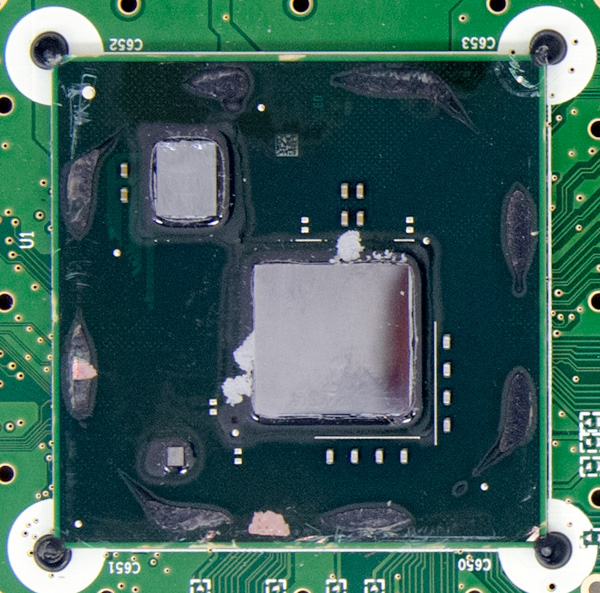
Clockwise from the top: CPU, GPU, off-chip memory?
The approximate die sizes for all components on the MCM are in the table below:
| Wii U Silicon Analysis | ||||
| Dimensions | Approximate Die Size | |||
| CPU | 5.2mm x 6.3mm | 32.76mm2 | ||
| GPU | 12.3mm x 12.7mm | 156.21mm2 | ||
| 3rd die (memory?) | 1.79mm x 1.48mm | 2.65mm2 | ||
If we assume a 40nm process for the GPU, then we're looking at something a bit larger than the RV740. The Wii U does boast backwards compatibility with games made for the original Wii, which is made possible thanks to a shared ISA with the original PowerPC based Wii.
The size comparison between CPU and GPU die shouldn't be too much of a surprise. When building a dedicated gaming machine it always makes sense to throw more transistors at your GPU. The nearly 5x ratio of GPU to CPU die size here is a bit on the extreme side though. I suspect many of the current generation consoles, including the Wii U, suffered from a lack of a powerful yet affordable CPU solution that could be easily implemented.
I also took some power measurements on the Wii U. The system is powered by a 75W external power supply, but total system power consumption doesn't even hit half of that (at least with the games I tried):
| Wii U Power Consumption | ||||
| System Power Consumption in Watts | ||||
| Standby (Power Off) | 0.22W | |||
| Wii U Menu (No Disc in Drive) | 31.2W | |||
| Wii U Menu (Disc in Drive) | 32.8W | |||
| Super Mario U | 33.0W | |||
| Netflix Playback | 28.5W | |||
Rendering the Wii U menu actually consumes almost as much power as playing Super Mario U. Watching a movie on Netflix consumes a bit less power, my guess is a lot of the 3D blocks are power gated leaving only the CPU cores and video decode hardware active.
The Wii U ships with its own web browser based on webkit, the user agent string for the latest version of the Wii U's software is: Mozilla/5.0 (Nintendo WiiU) AppleWebKit/534.52 (KHTML, like Gecko) NX/2.1.0.8.21 NintendoBrowser/1.0.0.7494.US.
Pages load quickly and compatibility is surprisingly decent (HTML5 test: 258 + 4 bonus points). By default you control and view the browser on the GamePad, but you can also choose to display the content on your TV via the console. Scrolling is very smooth and the overall experience is way better than what you'd normally expect from a web browser on what's primarily a game console. It's not quite as good as using a modern tablet, but still usable. And where there is a browser, we will run SunSpider on it:

The browser is using an older version of WebKit, which is likely responsible for some of the not absolutely stellar performance here.


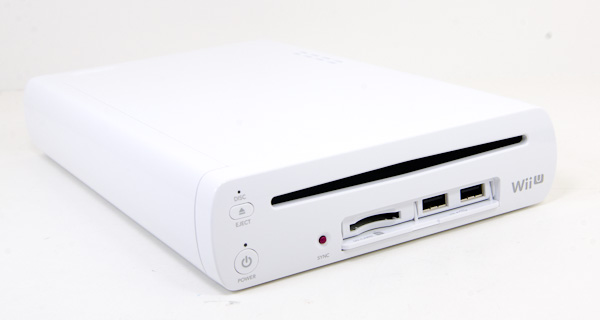

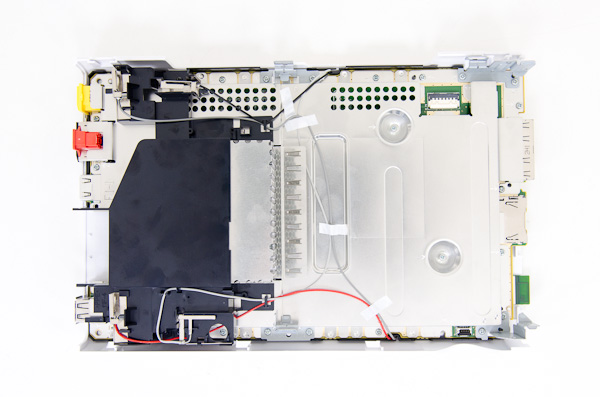
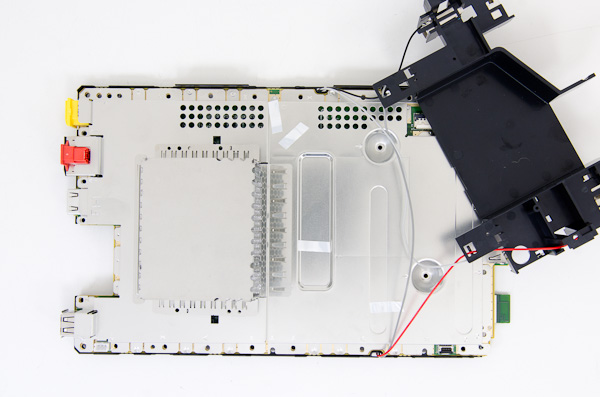
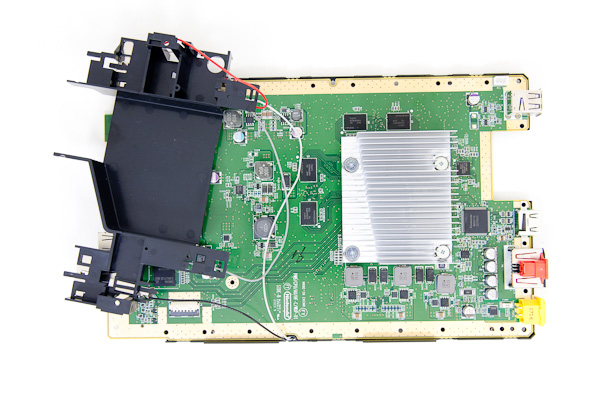
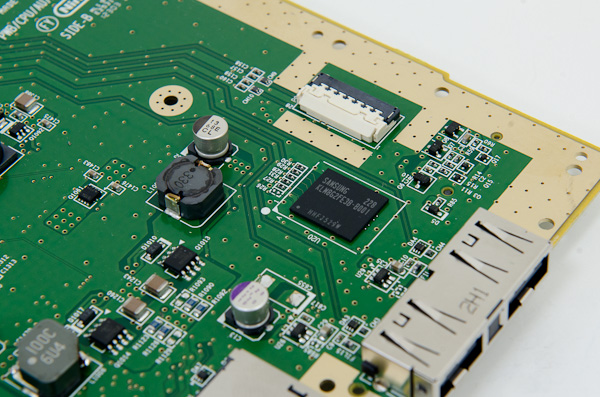

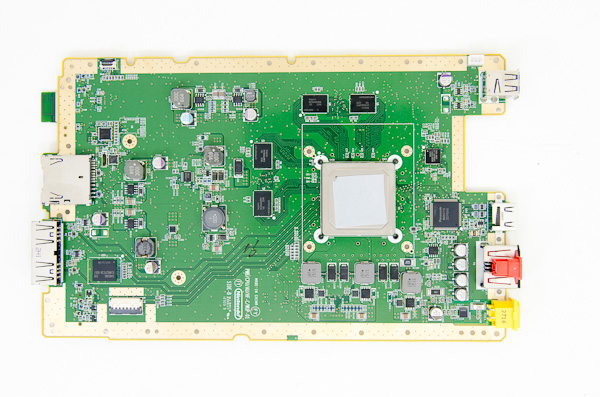















132 Comments
View All Comments
tipoo - Sunday, November 18, 2012 - link
It's because Intel won't licence chips out. IBM wins because they sell the design of the chip, then X console maker can modify it and shrink it on their own schedule. And also, there are whispers that the PS4 and Nextbox may be using AMD CPUs (or APUs), and AMD does already have experience catering to consoles.tipoo - Sunday, November 18, 2012 - link
By the way I'm not sure about the IBM not being competitive anymore either. The Power7 CPUs still are extremely competitive with Intel in high throughput scenarios, so I hear.Kevin G - Monday, November 19, 2012 - link
The weird thing about AMD's new strategy is that it doesn't necessarily mean an x86 chip inside of an APU from them anymore. They already have an ARM license and I'm sure that a licensing deal can be worked out with IBM to include a PowerPC core if the console maker desires (note that the Xbox 360 now uses a triple core PowerPC + Radeon based GPU on one die).Kevin G - Sunday, November 18, 2012 - link
Actually the differences between POWER and PowerPC nowadays is purely marketing. The divergence pretty much ended with the POWER5 (though Altivec SIMD wasn't added until the POWER6). The distinctions between POWER and PowerPC in terms of hardware support are in SoC features like on-die cryptography, TCP/IP off load and accelerated memory compression that fall outside of the CPU core.And IBM has been developing new PowerPC based cores. The Wii U could use the embedded PowerPC 476 core or the PowerPC A2 core. These cores would be a minor step up from what is found in the XBox 360 or the Cell PPE inside of the PS3. Sandy Bridge is far more aggressive core design than either of the PPE, PPC 476 or PPC A2 but it is also larger and consumes more power. The main reason IBM gets these contracts is due to their willingness to design and manufacture a custom chip.
As for POWER, the new POWER7+ takes the performance crown in the high end server world. It manages to top the 10 core Westmere-EX and the 8 core Sandy Bridge-E.
tipoo - Sunday, February 10, 2013 - link
According to the hacker Marcan it's actually using PowerPC 750 cores. So something related to the PowerPC G3.Zodiark1593 - Sunday, November 18, 2012 - link
Reading an interview on the development of the WiiU, it seems that both the CPU die and GPU die have some form of embedded memory. Not sure what that tiny chip is for though.tipoo - Sunday, November 18, 2012 - link
That's what I've been hearing too, although the CPU one isn't nearly as large, possibly something like 32mb GPU, 3MB CPU. The CPU one is just used for an L2 cache replacement.MrMilli79 - Sunday, November 18, 2012 - link
You mention Hynix DDR3-800 devices but I guess the 800 means 800Mhz which would translate into DDR3-1600. So that's 12.8GB/s instead of 6.4GB/s. Almost every laptop sold these days is equipped with DDR3-1600 and it's dirt cheap. I would even assume that DDR3-800 might be more expensive these days.The AMD GPU also functions as the northbridge and southbridge (just as on the Wii). So don't forget to take that into account. RV740 was 137mm². That doesn't leave too much space for the northbridge, southbridge and eDRAM. RV740 also had a power consumption of around 60-80W. Even with a decreased clock speed that wouldn't fit into the 33W of the Wii U. Or it's much less than a RV740 or it's not 40nm.
I see two possible candidates for the CPU.
My first guess would be the PowerPC 470. Multicore capable, very low power consumption, very small, customizable but the speed is more in the range of an ARM core. It would make sense I guess since many developers mention the lack of CPU performance.
My second guess would be the PowerPC A2. Multicore capable, low power consumption, small, ... but not really meant for something like a console (but still possible).
Flyingcircus - Sunday, November 18, 2012 - link
i'm a bit confused about the model number of the memory chipsaccording to your pictures we're dealing with H5TQ4G63MFR-xxC
however this data sheet states that there is no model of this chip with 512MB capacity
http://goo.gl/itla1
also speed grades in this pdf don't match with the 12 we're seeing here in the model number
i couldn't find that exact model number in any data sheet
am i missing something?
Sniffynose - Sunday, November 18, 2012 - link
See my comment below, they are 256mb x16 for the 96ball FBGA chips, so unless 4 more are on the underside of the mainboard we have just found the o/s only memory, not the dedicated video memory